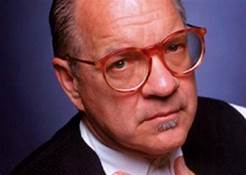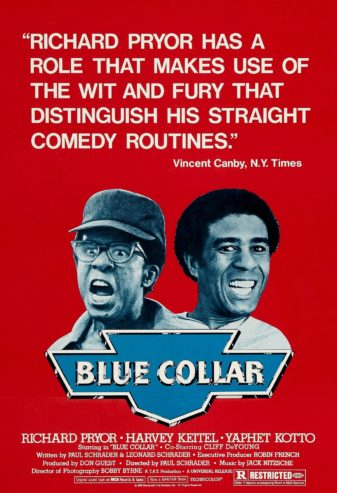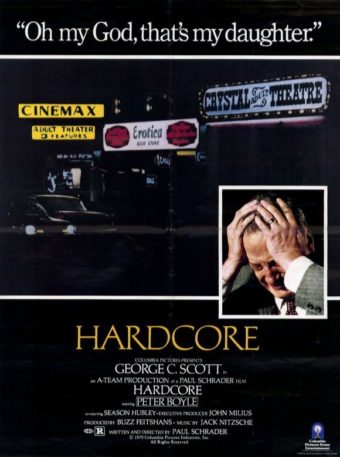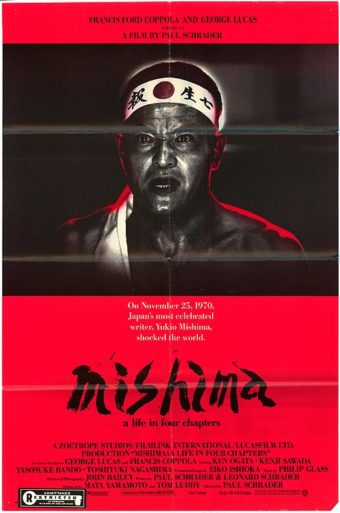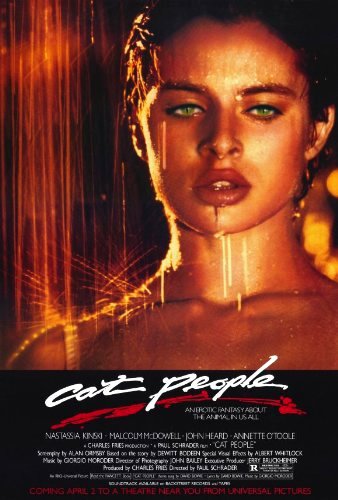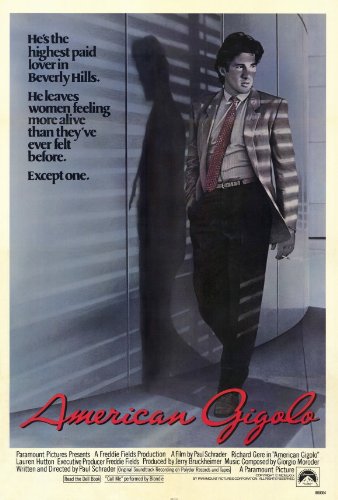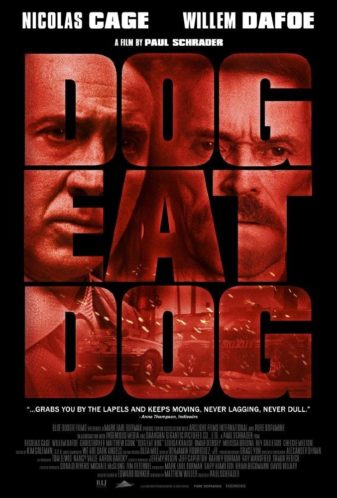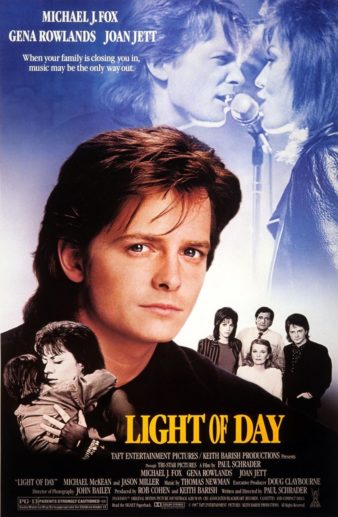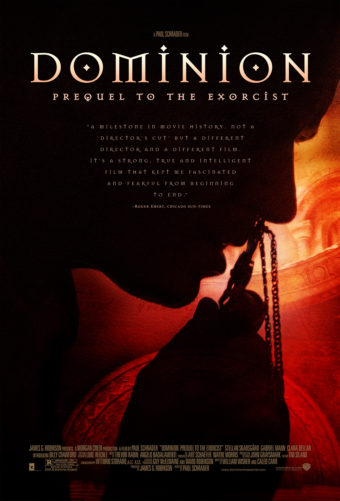This week marks an important event for film nerds everywhere: the opening of FIRST REFORMED, the new—and, I’m told, far above average—film by writer-director Paul Schrader.
Schrader was and remains one of the most vital members of the “movie brat” generation of filmmakers that made its mark in the 1970s. Included in its ranks are names like Francis Ford Coppola, Martin Scorsese, Steven Spielberg and George Lucas. Schrader is in many respects the most idiosyncratic and uncompromising of the bunch, with a singularly corrosive vision that was showcased in his most famous work, the screenplay for Scorsese’s TAXI DRIVER (as Schrader recently complained, “It doesn’t really matter what I do, the first line of my obituary will be ‘the writer of TAXI DRIVER’”), and has never wavered throughout a 40-plus year career that has seen a great deal of controversy (Schrader also scripted THE LAST TEMPTATION OF CHRIST, which may be the single most controversial film of the past 30 years).
The good news is that, unlike so many other filmmakers of his generation, Schrader has lost none of his fire in recent years. Note that two of the top five films listed below bear post-2000 copyrights, and that Schrader, to his credit, continues to make trouble (the mere mention of 2008’s ADAM RESURRECTED, I’ve found, elicits violent reactions from many).
In celebration of the release of FIRST REFORMED, here is my ranking of Paul Schrader’s feature films up to 2018. You’ll find I’ve left off FOREVER MINE, THE CANYONS and DYING OF THE LIGHT, as those films, I feel, are better unmentioned, but have made sure to include the rest, starting with my favorite Schrader work…
1. BLUE COLLAR (1978)
This downright lacerating film was Schrader’s first outing as a director. Richard Pryor, Harvey Keitel and Yaphet Kotto play workers at a Detroit auto plant who rob their own union office, for which they end up paying dearly. The performers are all top notch, particularly Pryor, who proved beyond a shadow of a doubt here that he could act (a fact that’s easy to forget in light of his subsequent turns in SUPERMAN 3, CRITICAL CONDITION et al). For his part, Schrader renders his protagonists’ financial dire straits with stunning vividness and authenticity. That’s in addition to the terror of Kotto’s murder (he’s gassed in a booth) and the wrenching suspense of the final scenes, leading to a conclusion as grim as it is inevitable.
2. ADAM RESURRECTED (2008)
Schrader’s craziest movie by far, which makes ADAM RESURRECTED one of the craziest movies of all time. A film that’s too out-there even for cultists, it deals with the Holocaust, an admittedly touchy subject. Audiences can accept Holocaust themed comedies (such as LIFE IS BEAUTIFUL), but apparently not the type of whacked-out psychological reverie Schrader provides. Then again, though, maybe the fact that this film is only a decade old has something to do with the lack of response it’s gotten thus far; it often takes decades for a cult to form, so perhaps we’ll just have to wait for ADAM RESURRECTED to find its audience. In the meantime I urge adventurous viewers to seek out the film, and admire Schrader’s bold use of surrealism and Jeff Goldblum’s daring performance as a Jewish man traumatized by having been forced to behave as a dog by a sadistic Nazi (Willem Dafoe). Yes, it’s that kind of movie
3. HARDCORE (1979)
Judging by Schrader’s comments about this, his second feature, he seems to believe it was something of a failure. If that’s true HARDCORE was a mighty interesting failure whose flaws actually enhance it. The intent, it seems, was a hard-hitting SEARCHERS-inspired drama about a conservative businessman (George C. Scott) looking to track down his porn star daughter, but what emerged was a primo example of big studio grindhouse moviemaking a la MANDINGO and NIGHT OF THE JUGGLER. That’s a plus in my book, even if it means the film isn’t nearly as deep as Schrader appears to have wanted it to be. What it is is an absorbing and titillating thriller with a memorably over-the-top climax and a solid performance by Scott, who’s resolutely stern and stoic presence makes for a surprisingly good fit with the unremittingly sordid milieu.
4. AUTO FOCUS (2002)
A drama that’s singularly dark and uncompromising even by Schrader standards, AUTO FOCUS is about the life of HOGAN’S HEROES star Bob Crane. As you might guess, Schrader and screenwriter Michael Gerbosi focus heavily on Crane’s sex addiction, which got out of control and eventually consumed his life—and likely had a more-than-casual bearing on his still-unsolved death. What really elevates the film is the lead performance of Greg Kinnear, whose inherent perkiness makes for an excellent counterpoint to Schrader’s pitiless vision.
5. (tie) MISHIMA: A LIFE IN FOUR CHAPTERS (1985) & PATTY HEARST (1988)
Schrader’s most ambitious work of the eighties occurred in this dynamic duo of highly eccentric biopics, each containing flashes of undeniable brilliance. Unfortunately, these films are also notably flawed, due largely to the fact that Schrader really wasn’t the ideal director for either. MISHIMA: A LIFE IN FOUR CHAPTERS explores the life of Japan’s late Yukio Mishima (played by Ken Ogata), a novelist who in 1970 attempted to overthrow the Japanese government, in a highly stylized fashion via dramatizations of three of his novels. The film has a somewhat poseurific, KUNDUN-like feel in its attempt at replicating the styles of Japanese masters like Ozu, Kurosawa and Kobayashi, yet it always feels thoroughly Western-based—an effect bolstered by the narration of the very Caucasian Roy Scheider (were MISHIMA made today it would doubtless be tarred with the cultural appropriation brush). The Philip Glass score certainly deserves praise, although it plays better as standalone music than it does in conjunction with the film. PATTY HEARST dramatizes the early 1970s abduction and brainwashing of Patricia Campbell Hearst (played by the late Natasha Richardson) by revolutionary criminals; like MISHIMA it’s done up in a heavily stylized fashion that depicts Hearst’s ordeal through an overlay of CABINET OF DR. CALIGARI-esque expressionism. It’s crippled by the fact that, in a most un-Schrader-like development, its heroine is passive and emotionless, although the overpowering nightmarishness of the enterprise, as with the innovation and ingenuity of MISHIMA, holds one’s attention.
6. AFFLICTION (1997)
Nick Nolte has never been better than he is in AFFLICTION, the strongest of Schrader’s nineties-era films. Nolte plays a troubled cop in a small New Hampshire town, and James Coburn, who won an Oscar for his role, plays Nolte’s abusive father. The strained relationship between these two men gradually comes to the forefront of the narrative, which involves an investigation into a suspicious hunting accident that (this being a Schrader project) you can be sure will come to encompass madness and murder. Here, though, the climactic mayhem is far from the redemptive violence of so many past Schrader projects, being an expression of the corrosive inescapability of family ties and the hopelessness of small town life in the Northeast. The film, in fact, can be seen as the middle part of a loose-knit late nineties trilogy, bookended by FARGO and A SIMPLE PLAN—not bad company to be in!
7. CAT PEOPLE (1982)
Ostensibly a remake of 1942’s CAT PEOPLE, this 1982 monstrosity is actually a deeply morbid expression of the more unsavory obsessions of its director. As a horror movie it admittedly isn’t much, with Nastassia Kinski (before she became Nastassja) discovering she’s a were-cat who turns into a leopard when sexually aroused. This leads to a number of freaky scenes, culminating in a sadomasochistic climax involving Kinski and John Heard, playing a zookeeper in over his head. Critics were deeply freaked out by Schrader’s perversity, particularly in relation to the stateliness of the earlier film. It actually reminded me of the blood-soaked S&M love stories found in classic genre novels like Hans Heinz Ewers’ VAMPIRE (1927) and Guy Endore’s WEREWOLF OF PARIS (1936), both of which appeared several years before the original version of CAT PEOPLE.
8. THE COMFORT OF STRANGERS (1990)
Schrader has claimed that Pauline Kael, who served as his mentor, told him “you’ve become a good director” after seeing this film. It’s an elegant and perverse adaptation of Ian McEwan’s novella about a British couple (Natasha Richardson and Rupert Everett) in Venice who fall under the spell of a strong-willed nut (Christopher Walken) and his companion (Helen Mirren), to their ultimate detriment. The Venetian scenery is well utilized and Schrader’s prowling Steadicam visuals are really something to see, but the film has a rather serious problem—quite simply, Everett and Richardson are such drips it’s impossible to work up much interest in them or their dilemma. The only remotely interesting character being the one played by Walken, who isn’t given nearly enough to do.
9. AMERICAN GIGOLO (1980)
The first of Schrader’s modern-day riffs on Robert Bresson’s PICKPOCKET. The influence is evident in the highly austere tone and resolutely stoic, unemotional protagonist, both of which are deliberately turned on their head in the soulful final scene, which shamelessly rips off that of Bresson’s film. Richard Gere plays the title character, a Los Angeles himbo who gets framed for the murder of one of his clients while falling in love with a politician’s wife (Lauren Hutton). It’s all pretty silly, and not a little dated, but that latter aspect is one of the film’s most charming elements; its depiction of late-1970s Los Angeles is now irresistibly nostalgic. AMERICAN GIGOLO also happens to be one of the absolute best looking of Schrader’s films, with cinematographer John Bailey and visual consultant Ferdinando Scarfiotti (who did the same duties on CAT PEOPLE and SCARFACE) working overtime to create a visual universe as seductive as the main character is supposed to be.
10. WITCH HUNT (1994)
This made-for-HBO entertainment is perhaps the most un-Schraderish Paul Schrader movie ever. A sequel to 1991’s Martin Campbell-helmed CAST A DEADLY SPELL, WITCH HUNT is set in an alternate-universe Hollywood in the 1950s, where magic is a commonplace reality and the authorities are opposed to its use. A commission is set up to root out users of magic, just as a private dick named Lovecraft (Dennis Hopper, replacing Fred Ward) investigates the killing of a studio executive whose widow (Penelope Ann Miller) has been falsely implicated. Lovecraft ends up enlisting the services of a witch (Sheryl Lee Ralph), which only plunges him deeper into the toxic atmosphere of persecution and suspicion. I realize I’m making the pic sound a lot deeper than it actually is, as it’s a diverting-at-best trifle whose most memorable elements are the early nineties TV worthy special effects, which are charmingly quaint by modern standards.
11. DOG EAT DOG (2016)
Sometimes reading a movie’s source novel before seeing it is a bad idea. That was definitely the case with this crime drama, adapted from Edward Bunker’s 1997 novel of the same name. I consider that book one of the decade’s finest crime novels, a masterfully crafted mix of pulp invention and gritty realism that has been optioned for film numerous times since its publication. Somehow Paul Schrader ended up with the task of adapting Bunker’s text, and created a jazzy and black-humored (read: Tarantino-esque) spectacle marked by gaudy lighting, gratuitous pop culture references (Taylor Swift is a constant touchstone) and a highly flamboyant lead performance by Nicolas Cage. As such the film isn’t without interest, being consistently surprising in its storytelling and visual design, and boasting the type of unhinged emoting that made Cage famous (his outrageous Humphrey Bogart imitation in the climactic scenes must be seen to be disbelieved). Unfortunately all the flamboyance is allowed to overwhelm the drama, leaving us with a textbook example of stylistic overkill.
12. LIGHT SLEEPER (1992)
Essentially a grab-bag of familiar Schrader motifs in search of a unified whole, with Willem Dafoe as a lonely drug dealer who cruises the mean streets of NYC in the back of a limo, makes copious diary entries and gets mixed up in a drama that recalls AMERICAN GIGOLO and HARDCORE, topped off with a TAXI DRIVER-esque burst of redemptive violence (and a final scene that, as in AMERICAN GIGOLO, once again cribs from that of PICKPOCKET). Schrader is incapable of making a completely uninteresting film—the final shoot-out is strong, and the Giorgio Armani costuming is quite striking, particularly on the female leads Dana Delany and Susan Sarandon—but it doesn’t add up to much.
13. LIGHT OF DAY (1987)
A film crippled by a severely miscast Michael J. Fox in the lead role. He plays one of two siblings in a struggling rock band (MJF was, it seems, Hollywood’s go-to rock ‘n’ roller in the eighties), with the other played by Joan Jett—yes, that Joan Jett, who unexpectedly enough delivers the film’s best, and certainly most authentic, performance. Gena Rowlands isn’t bad either as the siblings’ obnoxious mother.
14. TOUCH (1997)
It’s no wonder this film doesn’t really work: it’s a satire on religion, based on a novel by Elmore Leonard, with a very nineties hipster sensibility. About a young man who bears the stigmata of Christ and can heal peoples’ afflictions with a touch, it’s a far cry from Schrader’s dark, non-ironic sensibilities. Certainly he deserves credit for trying something new, but TOUCH, like the previous entry, suffers from a miscast lead, requiring a much stronger performance than Skeet Ulrich (the then-flavor of the month) was able to deliver.
15. DOMINION: PREQUEL TO THE EXORCIST (2005)
I REALLY wanted to like this, the original version of the EXORCIST prequel that was heavily reshot by Renny Harlin (and released as EXORCIST: THE BEGINNING), but it left me cold despite some affecting moments. Most of those moments occur near the end, when Stellan Skarsgaard as a young Father Merrin stops schlepping around an African village (as he does for most of the movie) and gets down to confronting the demon tormenting him in a surprisingly poetic special effects packed showdown. The film certainly looks good, having been photographed by the great Vittorio Storaro, but it’s far from the thoughtful horror fest it was sold as, being a tortured rumination on faith and evil with all charm of Ingmar Bergman on downers.
16.THE WALKER (2007)
A slick but disappointing film that despite promising subject matter just never comes to life. It stars an overly affected Woody Harrelson as a gay Washington, D.C. socialite who becomes involved in a political scandal. Not even a talented cast (Lauren Bacall, Kristin Scott Thomas, Ned Beatty, Lily Tomlin) can do much with this, which isn’t Schrader’s worst film but is definitely up (or, more accurately, down) there.

